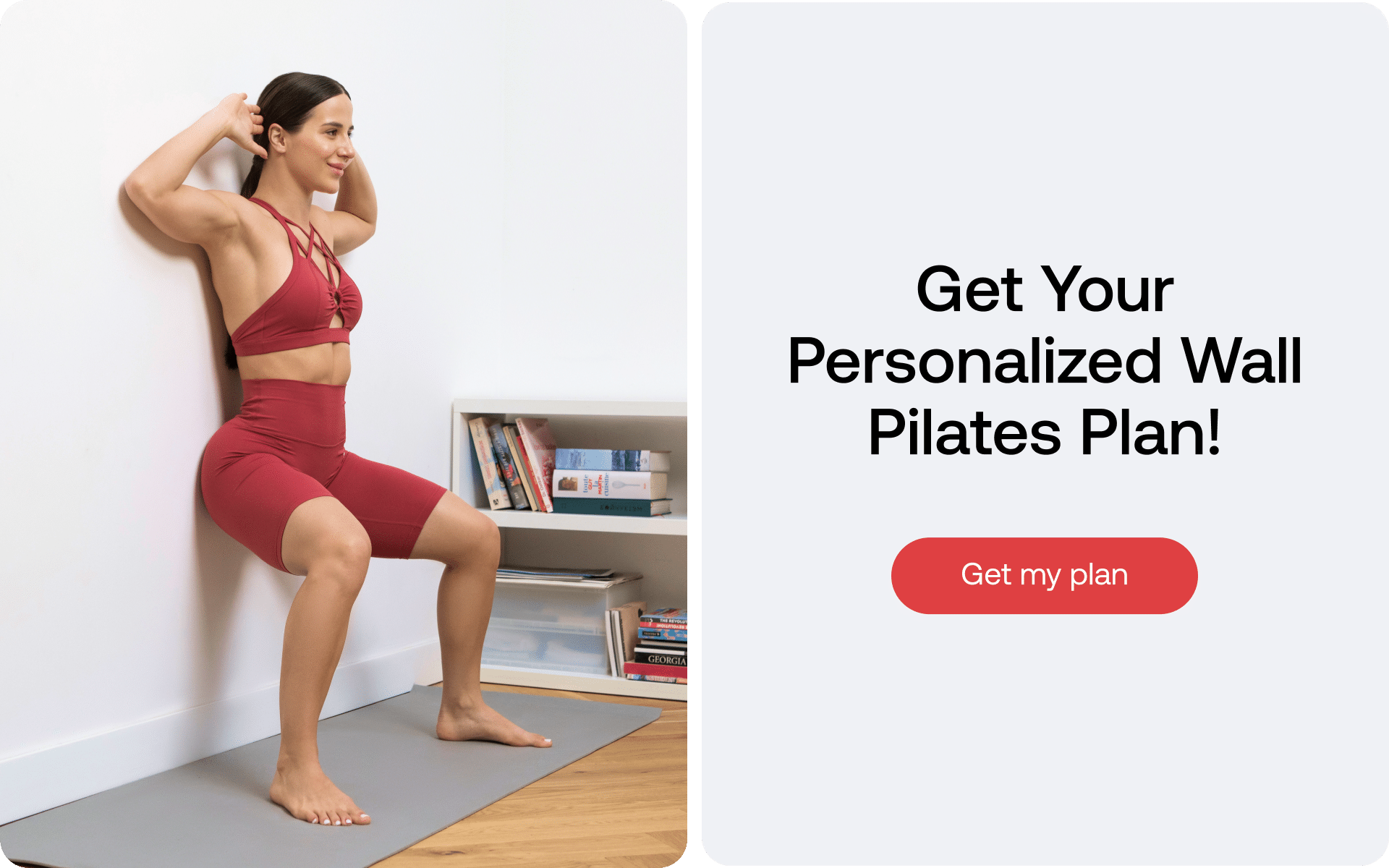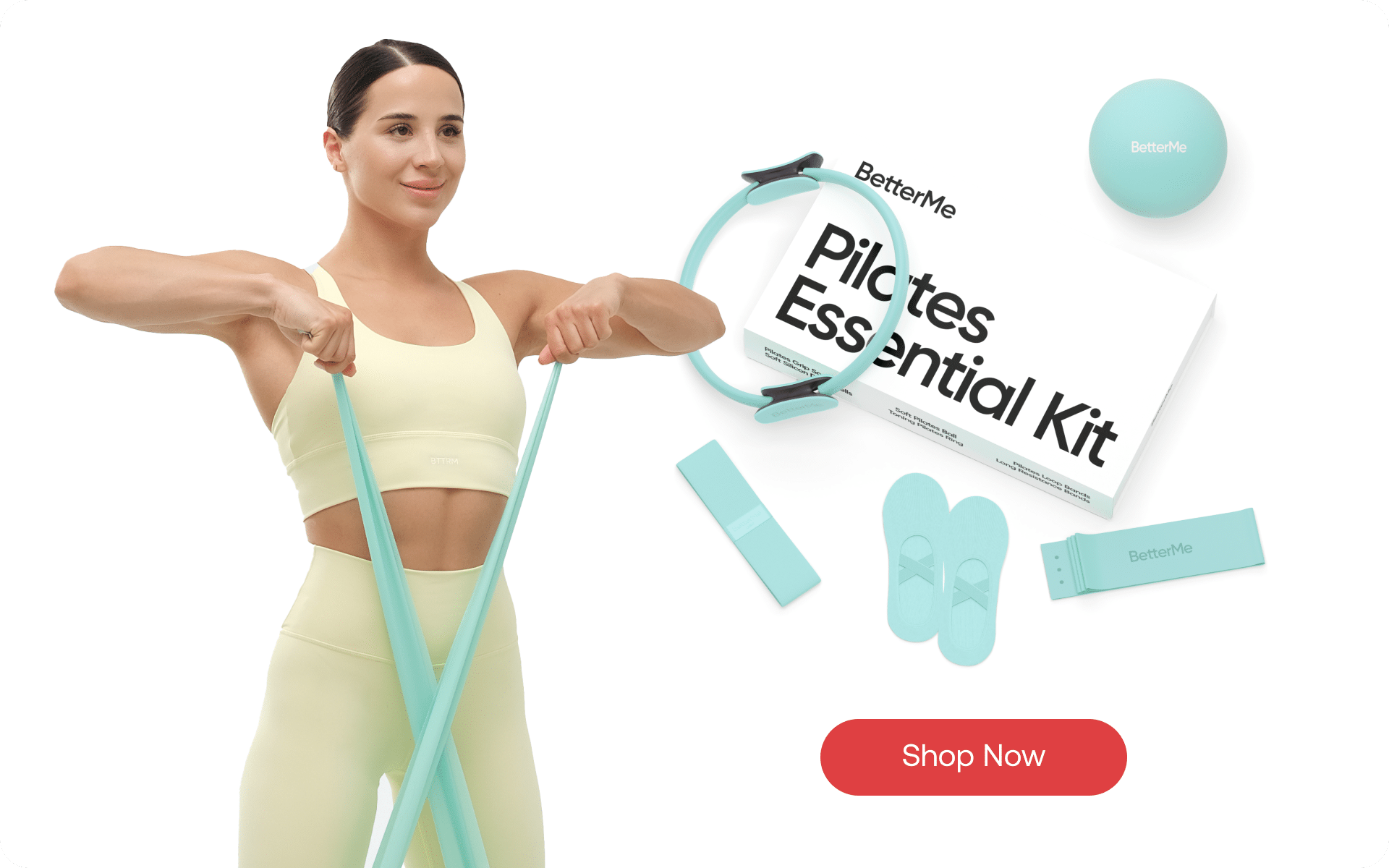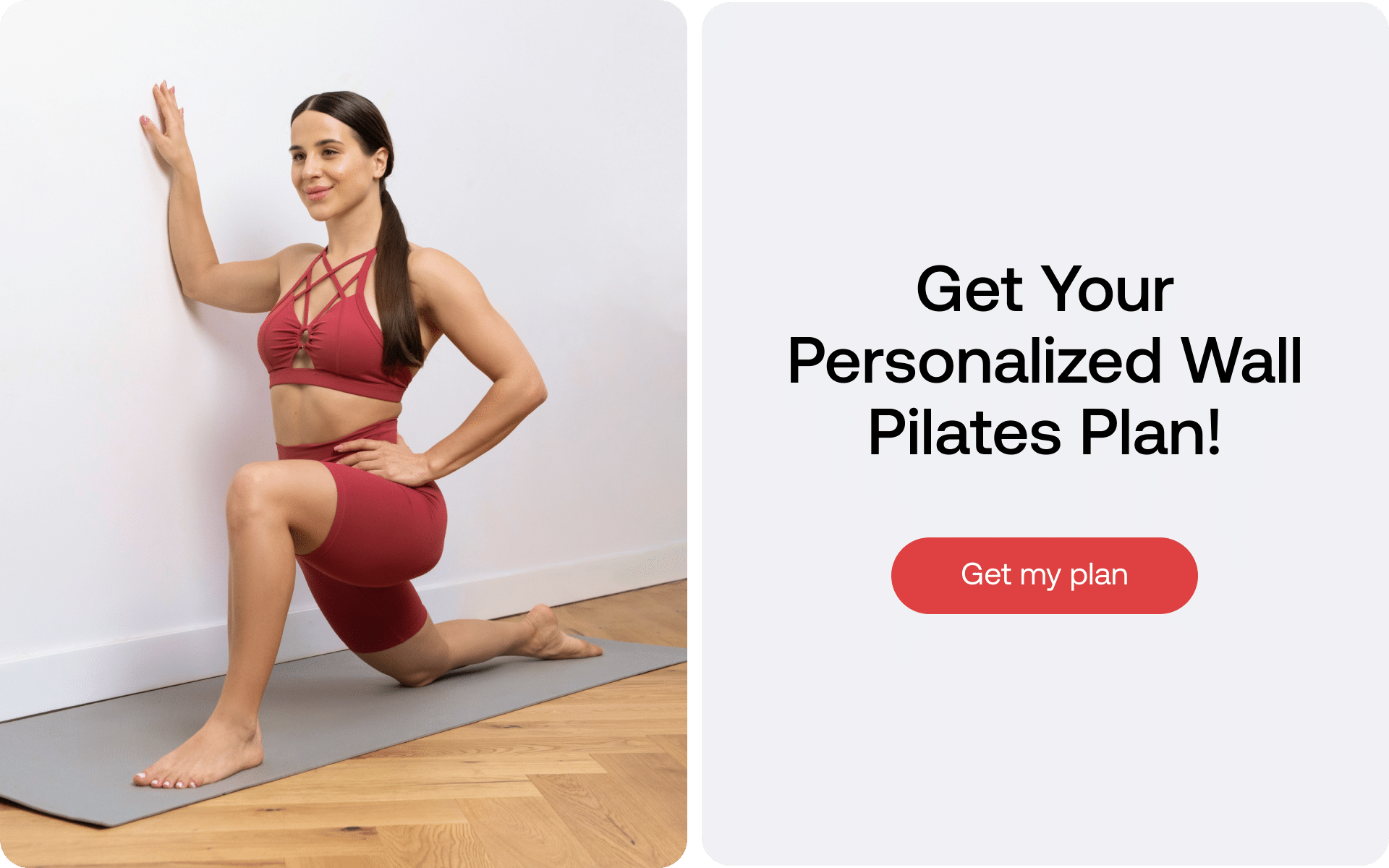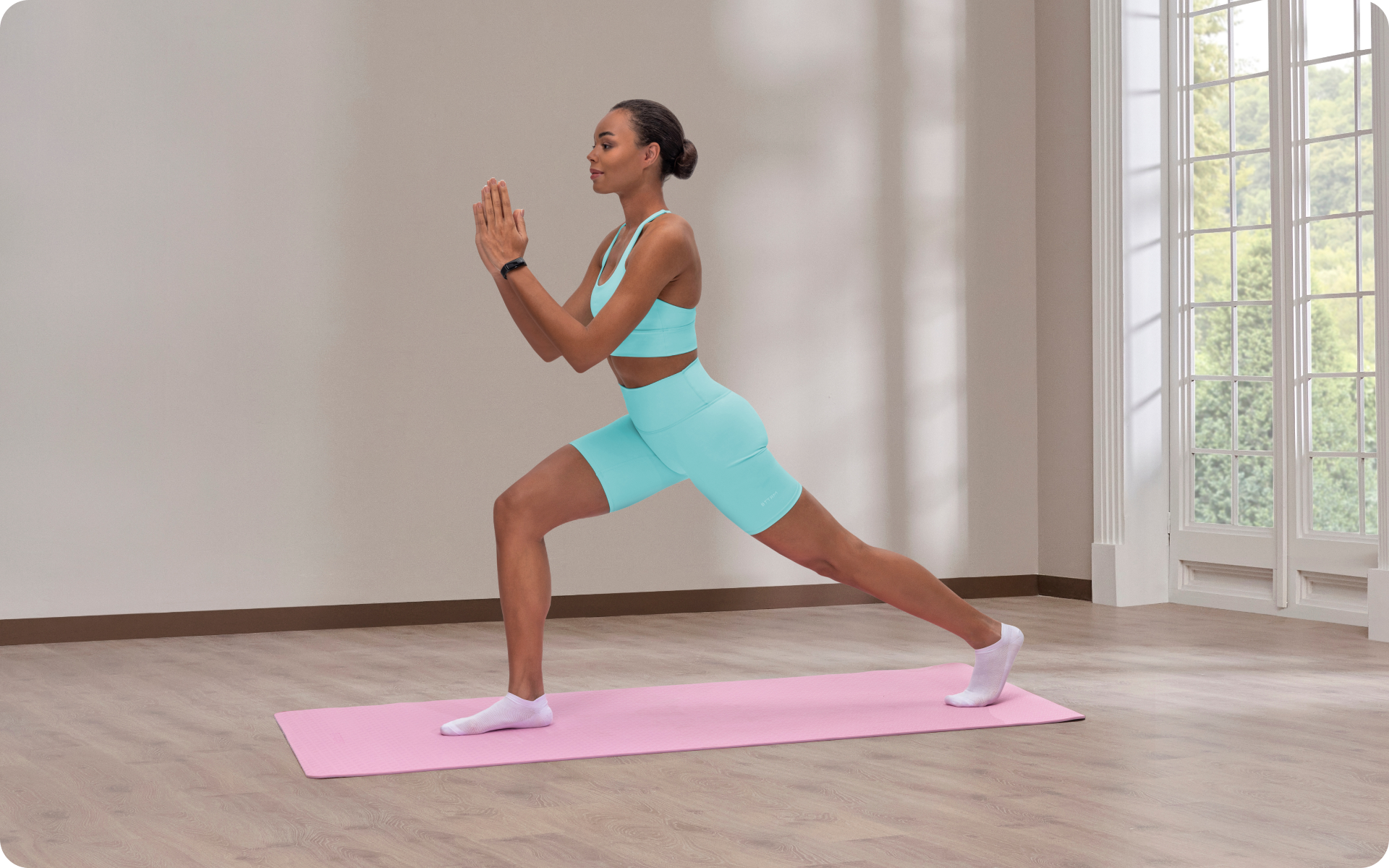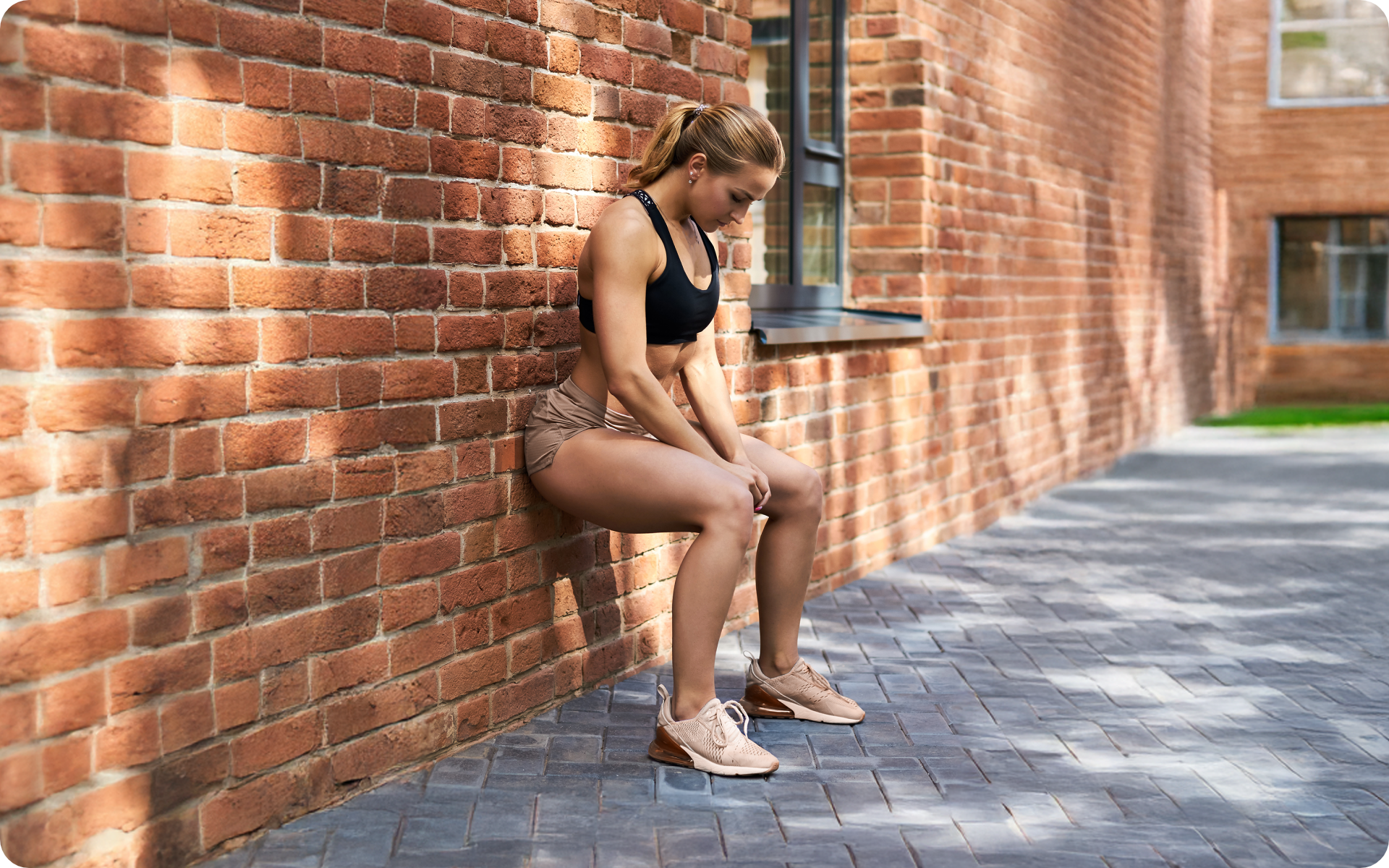Are you tired of the same old crunches and sit-ups, but still pursuing those chiseled abs? Look no further! Wall planks are your secret weapon for sculpting a rock-solid core and offers an exciting alternative that yields outstanding results. With the potential to engage up to 80% more muscle fibers than traditional exercises, wall planks are a game-changer in the world of ab workouts. But be warned: this challenge is not for the faint-hearted! It takes grit, determination, and consistency to master this powerhouse move. If you’re ready to carve those washboard abs out and break free from the mundane, keep reading to discover the incredible benefits of wall planks and how they could revolutionize your fitness routine.
What Is A Wall Plank?
A wall plank is a variation of the classic plank exercise, where instead of supporting your body weight on the floor, you use a vertical surface like a wall for support.
This challenging yet effective workout targets the same muscle groups as a traditional plank but adds an extra dimension of difficulty and engagement.
How do wall planks differ from traditional planks? While both wall planks and traditional planks are excellent exercises for toning your abs, wall planks offer an elevated challenge that requires increased core stabilization and balance.
By incorporating wall planks into your fitness routine, you’ll add variety, intensity, and an extra edge to your core workouts.
Let’s break it down:
Wall Plank
- Position: Your body is in a diagonal line with your feet on the ground, and your hands or forearms are placed against the wall.
- Difficulty Level: The higher the angle of your body, the more challenging the exercise becomes.
- Core Engagement: Wall planks require increased core stabilization due to the added difficulty of maintaining balance and alignment.
- Variations: You can easily modify wall planks by adjusting your body’s angle or incorporating side wall planks to target oblique muscles.
Traditional Plank
- Position: Your body is in a horizontal line with your toes on the ground and your forearms or hands supporting your upper body.
- Difficulty Level: The intensity of traditional planks can be adjusted by altering the position of your arms or legs.
- Core Engagement: Traditional planks engage your core muscles but may not be as challenging as wall planks in terms of balance and stabilization.
- Variations: There are numerous variations of traditional planks, such as side planks, reverse planks, and single-leg planks.
Read More: Plank Progressions: 13 Variations Of This Core Strengthening Exercise For Every Fitness Level

What Muscles Do Wall Planks Use?
Wall planks primarily target the core muscles, which play a crucial role in stabilizing the spine, maintaining proper posture, and improving overall physical performance. They also engage secondary muscle groups that contribute to the exercise’s effectiveness.
Here’s a breakdown of the main and secondary muscles targeted by wall planks:
Main Muscles Targeted
1. Rectus Abdominis
Located at the front of the abdomen, this muscle is commonly referred to as the “six-pack” muscle (2). During a wall plank, the rectus abdominis works to stabilize your core and maintain your body’s diagonal position.
A strong rectus abdominis can improve your performance in various exercises, reduce the risk of lower back pain, and support daily activities that require bending or twisting.
2. Transverse Abdominis
This deep abdominal muscle wraps around your torso like a corset, providing stability to the spine (2). In a wall plank, the transverse abdominis contracts to hold your body steady and maintain proper alignment.
Strengthening this muscle can improve posture, enhance core stability, and provide a solid foundation for other exercises.
3. Obliques (Internal And External)
These muscles are located on the sides of your abdomen and help with rotation and lateral flexion of the torso (2). While wall planks predominantly target the core’s frontal area, incorporating side wall planks can effectively engage the obliques.
Strong oblique muscles contribute to better posture, increased rotational strength, and improved performance in sports and daily tasks that require twisting movements.
BetterMe app will kick you out of the mental funk, shake off your extra weight, rid you off your energy-zapping habits, and help you sculpt the body of your dreams. Intrigued? Hurry up and change your life for the better!

Secondary Muscles Targeted
1. Deltoids
These shoulder muscles provide stability and support during wall planks, especially when you place your hands against the wall (5).
Strengthening the deltoids can improve shoulder stability, prevent injuries, and enhance your performance in upper body exercises like push-ups or overhead presses.
2. Glutes
The gluteus maximus, medius, and minimus work together to stabilize your hips and maintain proper alignment during wall planks. Strong glutes contribute to better balance, improved posture, and enhanced performance in lower body exercises like squats or lunges (9).
3. Quadriceps
Located at the front of your thighs, these muscles help maintain the straight line of your legs during wall planks. Strengthening the quadriceps can improve overall leg strength, boost athletic performance, and support daily activities that involve walking, running, or climbing stairs (4).
4. Erector Spinae
These muscles run along the spine and work to keep your back straight during wall planks. A strong erector spinae can improve posture, reduce the risk of back pain, and provide essential support for other exercises that require spinal stability (3).
How To Do A Wall Plank: Step-By-Step Instructions
- Stand facing a sturdy wall, about 2-3 feet away from it.
- Extend your arms and place your palms against the wall at shoulder height, keeping them shoulder-width apart. Ensure your fingers are pointing upwards.
- Lean forward, shifting your weight onto your hands, and walk your feet back until your body forms a diagonal line from your head to your heels. Keep your feet hip-width apart.
- Engage your core muscles by drawing your navel towards your spine. This will help maintain proper alignment and protect your lower back.
- Keep your legs straight and press your heels into the ground for additional stability.
- Hold your head in a neutral position, with your gaze slightly downward, ensuring your neck remains aligned with your spine.
- Focus on maintaining even breathing throughout the exercise, inhaling through your nose and exhaling through your mouth.
- Hold the wall plank position for as long as you can while maintaining proper form, aiming for at least 30 seconds to start. Gradually increase the duration as you become stronger.
If you find the standard wall plank too challenging, you can modify it by standing closer to the wall or placing your forearms against the wall instead of your hands. This reduces the angle of your body, making the exercise less intense.
Read More: How Long Is A Good Plank? Here Is What Experts Recommend
How Long Should You Hold A Wall Plank?
The duration you should hold a wall plank depends on your current fitness level and ability to maintain proper form. Beginners, aim to hold the wall plank for at least 30 seconds while focusing on correct alignment and muscle engagement.
As your core strength and endurance improve, gradually increase the duration of your wall plank holds. Advanced exercisers can aim for 1-2 minutes or even longer, as long as proper form is maintained throughout the exercise.
It’s essential to prioritize form over the duration of your wall plank holds. If you notice your form starting to falter, it’s better to end the exercise and rest before attempting another set.
Over time, with consistent practice, you’ll be able to hold the wall plank position for longer durations while maintaining excellent form.
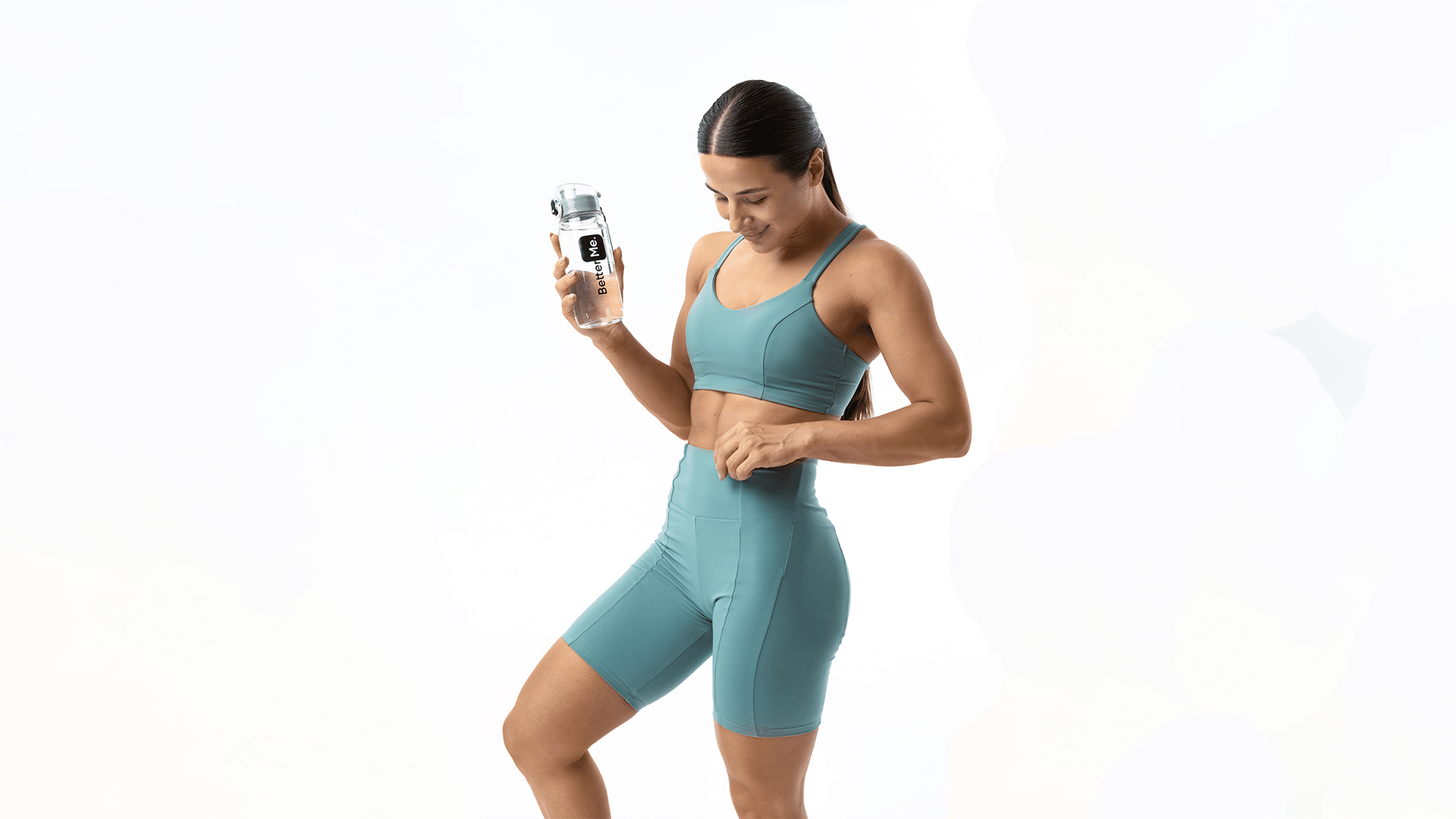
Wall Plank Mistakes To Avoid And How To Fix Them
- Sagging hips: This common mistake puts unnecessary strain on the lower back. To fix it, engage your core muscles and focus on maintaining a straight line from your head to your heels.
- Piking hips: Lifting your hips too high can reduce the effectiveness of the exercise. Keep your body in a diagonal line by engaging your core and glutes.
- Dropping head: Allowing your head to drop strains the neck and disrupts spinal alignment. Maintain a neutral head position with your gaze slightly downward.
- Holding breath: Not breathing properly during a wall plank can cause dizziness and limit your ability to hold the position. Focus on even, controlled breaths throughout the exercise.
Wall Plank Variations To Try
One-Arm Wall Plank
This variation increases the challenge by engaging one arm at a time, requiring more core stabilization and balance.
To do it:
- Begin in the standard wall plank position.
- Slowly lift one hand off the wall and place it on your hip or extend it straight out to the side.
- Maintain proper form and alignment while holding the one-arm wall plank for 15-30 seconds.
- Return your hand to the wall and repeat the exercise with the other arm.
Side Wall Plank
- This variation targets the oblique muscles, providing a well-rounded core workout.
- Stand sideways to the wall, about 2-3 feet away.
- Place your forearm against the wall, ensuring your elbow is aligned with your shoulder.
- Extend your legs and stack your feet, leaning into the wall with your body forming a straight line.
- Engage your core and hold the position for 30 seconds or longer.
- Switch sides and repeat the exercise.
Wall Plank With Leg Lift
Adding leg lifts to your wall plank engages the glutes and lower back muscles, further intensifying the exercise and providing a more comprehensive workout.
To do it:
- Begin in the standard wall plank position.
- Slowly lift one leg off the ground, keeping it straight and maintaining proper alignment.
- Hold the leg lift for 5-10 seconds before lowering it back down.
- Repeat with the other leg, alternating between legs for the desired number of repetitions.
Wall Plank With Knee Tuck
This variation engages the lower abs and hip flexors, adding an extra challenge to your core workout.
To do it:
- Start in the standard wall plank position.
- Bend one knee and bring it towards your chest without allowing your hips to sag or rotate.
- Hold the knee tuck for 2-3 seconds before returning your foot to the ground.
- Repeat with the other leg, alternating between legs for the desired number of repetitions.
Wall Plank With Shoulder Tap
Incorporating shoulder taps into your wall plank increases upper body engagement and challenges your balance.
To do it:
- Begin in the standard wall plank position.
- Slowly lift one hand off the wall and tap the opposite shoulder, keeping your core engaged and stable.
- Return your hand to the wall and repeat the movement with the other hand.
- Continue alternating between hands for the desired number of repetitions, focusing on maintaining proper form and alignment throughout the exercise.
Lean and toned up body isn’t just a far-fetched fantasy. Check out the BetterMe app and watch it propel your weight loss journey into high gear!
Top Wall Plank Exercise Benefits
Adding wall planks to your workout offers a number of benefits, including:
Improved Core Strength
Wall planks engage multiple core muscles, including the rectus abdominis, transverse abdominis, and obliques, resulting in a stronger and more stable core (12).
Enhanced Balance And Stability
By challenging your body to maintain a diagonal position against the wall, wall planks help improve balance, coordination, and overall stability.
Better Posture
Strengthening the core muscles through wall planks contributes to a better posture by supporting proper spinal alignment and reducing the risk of slouching or hunching (6).
Increased Flexibility
Wall planks stretch and lengthen various muscles, such as the shoulders, hamstrings, and calves, promoting increased flexibility and range of motion.
Reduced Lower Back Pain
A strong and stable core can alleviate pressure on the lower back, potentially reducing discomfort and pain associated with weak core muscles (1).
Full Body Workout
In addition to the core, wall planks also target secondary muscle groups like the deltoids, glutes, quadriceps, and erector spinae, making it an effective full-body exercise.
Adaptable For Different Fitness Levels
Wall planks can be easily modified to suit various fitness levels and populations by adjusting the angle of the body or incorporating different variations
No Equipment Required
Wall planks can be performed virtually anywhere there’s a sturdy vertical surface, making them an accessible and convenient exercise.
Improved Athletic Performance
A strong core is essential for athletic performance, as it provides a stable foundation for movement and power generation (7). Wall planks can help enhance performance in various sports and activities.
By incorporating wall planks into your fitness routine, you can enjoy these numerous benefits, transforming your core strength, stability, and overall well-being.

How Often Should You Do Wall Planks?
For optimal results, it’s recommended to incorporate wall planks into your workout routine 2-3 times per week, allowing at least 48 hours of rest between sessions for muscle recovery.
Including wall planks as part of a balanced fitness program that targets various muscle groups can help prevent overtraining and muscle imbalances
Overdoing wall planks or any exercise can lead to several negative consequences:
Muscle Fatigue
Performing wall planks too frequently without adequate rest can cause excessive muscle fatigue, reducing your ability to maintain proper form and increasing the risk of injury (8).
Overuse Injuries
Consistently overworking the same muscle groups without sufficient recovery time can lead to overuse injuries, such as strains, sprains, or tendonitis (11).
Decreased Performance
Overtraining can negatively impact your overall performance, as muscles need time to recover and rebuild in order to grow stronger (10).
Muscle Imbalances
Focusing excessively on one exercise or muscle group can result in muscle imbalances, which can affect posture, increase the risk of injury, and hinder overall fitness progress.
To avoid these issues, be sure to maintain a balanced workout routine that targets various muscle groups and allows for adequate rest and recovery. This will help you achieve optimal results while minimizing the risk of overtraining and injury.
The Bottom Line
Wall planks are an effective and challenging core exercise that provides numerous benefits, including improved core strength, enhanced balance and stability, better posture, increased flexibility, and reduced lower back pain.
By incorporating wall plank variations into your workout routine 2-3 times per week and prioritizing proper form, you can achieve optimal results while minimizing the risk of overtraining and injury.
DISCLAIMER:
This article is intended for general informational purposes only and does not serve to address individual circumstances. It is not a substitute for professional advice or help and should not be relied on for making any kind of decision-making. Any action taken as a direct or indirect result of the information in this article is entirely at your own risk and is your sole responsibility.
BetterMe, its content staff, and its medical advisors accept no responsibility for inaccuracies, errors, misstatements, inconsistencies, or omissions and specifically disclaim any liability, loss or risk, personal, professional or otherwise, which may be incurred as a consequence, directly or indirectly, of the use and/or application of any content.
You should always seek the advice of your physician or other qualified health provider with any questions you may have regarding a medical condition or your specific situation. Never disregard professional medical advice or delay seeking it because of BetterMe content. If you suspect or think you may have a medical emergency, call your doctor.
SOURCES:
- A Systematic Review of the Effectiveness of Core Stability Exercises in Patients with Non-Specific Low Back Pain (2022, ncbi.nlm.nih.gov)
- Anatomy, Abdomen and Pelvis: Abdominal Wall (2022, ncbi.nlm.nih.gov)
- Anatomy, Back, Muscles (2022, ncbi.nlm.nih.gov)
- Anatomy, Bony Pelvis and Lower Limb: Thigh Quadriceps Muscle (2022, ncbi.nlm.nih.gov)
- Anatomy, Shoulder and Upper Limb, Deltoid Muscle (ncbi.nlm.nih.gov)
- Effects of core strength training on core stability (2018, ncbi.nlm.nih.gov)
- Efficacy of core stability training on upper extremity performance in collegiate athletes (2022, ncbi.nlm.nih.gov)
- Muscle fatigue: general understanding and treatment (2017, ncbi.nlm.nih.gov)
- Muscles of the Gluteal Region (2022, teachmeanatomy.info)
- Overtraining Syndrome (2012, ncbi.nlm.nih.gov)
- Overuse injuries in sport: a comprehensive overview (2018, biomedcentral.com)
- Plank exercise (n.d., physio-pedia.com)

